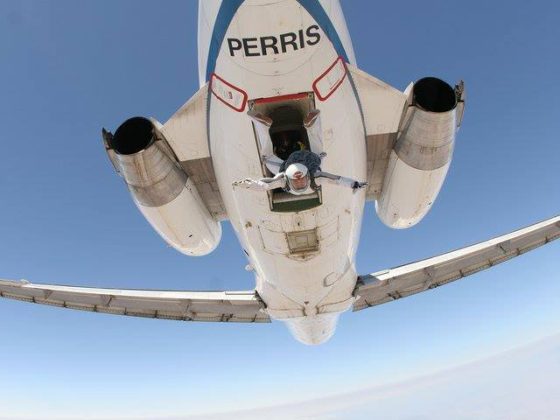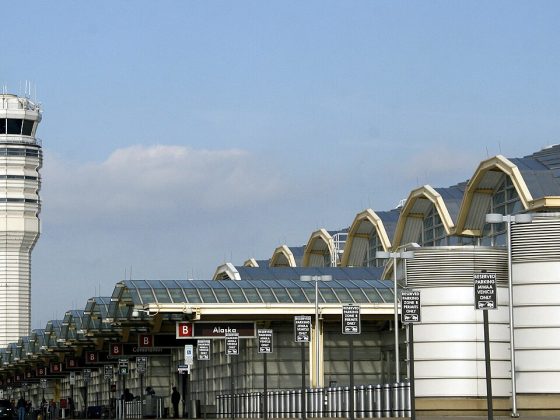American flew the jet with just 56 first-class seats to destroy Legend Airlines
It might not seem that long ago, but back in the late 1990s, the airline industry was a much different competitive environment. A whole host of start up and evolving airlines were focused on becoming successful low-cost carriers, including Fokker F-100s. They were competing against no less than eight major national airlines as well as established LLCs like Southwest Airlines, ATA, and America West. Airlines like Valujet (later AirTran), Vanguard, AirSouth, Frontier, and Midway Airlines offered a host of low-cost flight options to the traveling public. For many, they aimed to emulate the success of Southwest Airlines with low fares and frequent service. Most of these airlines competed on price and schedule. Airfares were cheap, the economy was strong, and optimism reigned the day.
Enter Legend Airlines, a threat to American Airlines
In 1996, Dalfort Aviation and a group of partners announced that they would fly 56-seat aircraft from Dallas Love Field to a number of business destinations. Utilizing the DC-9, they would ‘elevate’ the passenger experience with all first class seats, fancy meals served on china, and live satellite TV in each seat– all from their brand new terminal built on the same land at Love Field where they had provided aircraft maintenance services for years. Flights would be priced near the same as a coach fare from DFW.

According to the Legend Airlines website back in 2000, “the idea for Legend Airlines was born in 1996, when a group of individuals who were fed up with the hassles of air travel felt it was time for an airline that offered business travelers a stress-free and productive travel experience. They envisioned this airline would offer non-stop, long-haul service to major business destinations in the U.S., wider seats and better meals at competitive coach fares – all with the convenience of Dallas Love Field’s proximity to downtown Dallas and in compliance with the existing federal laws governing Love Field.”

The plan to fly such luxurious jets wasn’t altruistic. For years, Dallas Love Field was bound by the Wright Amendment. This Federal Law was a compromise between the cities of Dallas and Fort Worth brokered by Congressman Jim Wright. When DFW was built, the original agreement was to end commercial service at Dallas Love Field once the new international airport opened. Every airline except upstart Southwest Airlines agreed to move to DFW. After a lengthy legal battle, the compromise was that no airline could fly between the adjoining states of Texas unless they had 56 seats or less. For years, a detente existed between Southwest Airlines and DFW airport. Southwest only flew to the adjoining states from Love Field and thrived.
Few other airlines bothered to compete against them. But the wild and raucous 1990s led to a couple of disruptive forces. First, the dot com economy led to a feeling that wealth was the new standard for many and that budget conscious travel was a thing of the past for the well-to-do professional. Also, American’s high-priced fortress hub at DFW meant that markets like Los Angeles and New York were rife for disruption. Fares were too high and the general perception was that airlines like American were taking their customers for granted.
What followed was a 3+ year battle between American Airlines and Fort Worth versus the City of Dallas and Legend Airlines. When the dust finally settled, Legend Airlines was able to begin service to Washington Dulles and Las Vegas on April 5th with plans to add service to Los Angeles and Chicago soon afterwards.
American Sends In Their F-100 Soldiers to defend their fortress hub
At the time, American Airlines had a fleet of 75 Fokker F-100 “Luxury Jets”. Back in the day, there were many less regional jets in the market. CRJs and ERJs were actually a treat versus the prop planes that many passengers had to endure. They weren’t seen as the torture that they are today. American’s F-100, ‘jump jets’ or ‘barbie jets’ as they were commonly referred, provided jet service to markets where aircraft any larger than 100 seats would prove to be unprofitable. It was almost a treat for a market that would otherwise be served by an ATR-72 or Saab prop plane.
American deployed these jets on routes like O’Hare to Dayton and DFW to Tulsa. But after Legend won the legal battle, American decided to go to war against Legend, an airline that they saw as a genuine threat to their business. American Airlines retrofitted a sub-fleet of Fokker F-100 jets with just 56 seats to Dallas Love (photo in the link) with the express purpose of competing with Legend Airlines.
Legend launched service on April 5th, 2000. Less than a month later, American launched their service on the F-100s on May 1, 2000 to their prime business market of Chicago O’Hare, Los Angeles, and New York LaGuardia. American leveraged their frequent flyer program, brand-recognition and fleet to mount a massive challenge against the upstart. American offered all first-class service with meals, wide seats, and frequent flyer miles from Dallas Love Field.
Fokker F-100s defended their territory
Less than 7 months later, Legend Airlines folded. Fancy meals, a beautiful mahogany terminal, free papers, fancy meals, satellite TV and first-class seats weren’t enough. Along with the downturn of the economy because of the dot com bust, American’s Fokker fleet of first class jets were just too much for the upstart airline to handle. Legend Airlines officially suspended service on December 3rd, 2000. American continued their service even after Legend folded to avoid any anti-trust acquisitions. American suspended their F-100 first-class service to O’Hare and Los Angeles just a year later. The official reason for the suspension were the events of 9/11 but its hard to argue that American would’ve continued to serve the Dallas market with such service if it weren’t for the threat that it faced from Legend.

At the end of the day, American leveraged the Fokker F-100 fleet to defend their turf. Over the next decade American employed similar tactics to defend against other threats. Eventually, DFW airport became known as a fortress hub. Airlines like Spirit, Delta, and Vanguard all faced American Airlines wrath as American successfully defended their hub even as the downturn of 9/11 and a recession hit. American’s Fokker fleet didn’t fare much better. By the end of 2004, the fleet had disappeared from the company’s roster. A combination of the economy and the cost of parts for the airliner due to Fokker’s demise led to the end of the Fokker F-100 fleet at American.
The Fokker did its job. It protected American Airlines against an outsider threat.









